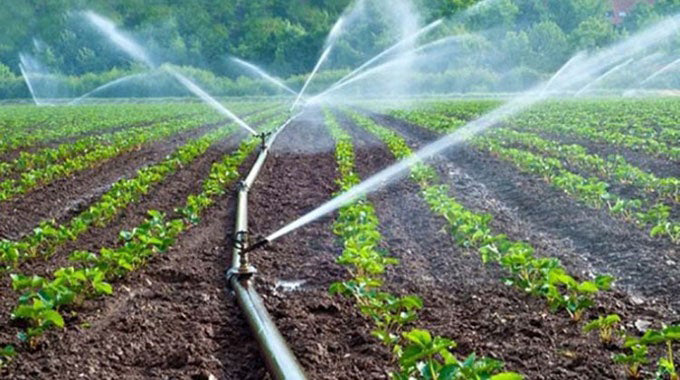Investing in irrigation essential to reduce impact of droughts on Africa

Ruth Butaumocho African Agenda
During my high school years at Mufakose 1 High School, Geography was a captivating subject which I thoroughly enjoyed outside English Literature.
Probably due to lack of gadgets and other tools, the textbook was the only authoritative teaching tool that our teachers heavily relied on then.
Naturally, without the aid of other gadgets, eloquence and good understanding of the subject always paid off for our teachers when delivering lectures to an ostensibly struggling bunch of students, who were probably interfacing with the topic for the first time.
I still remember with nostalgia how most students looked bewildered when our Geography teacher gave a captivating narration of the foundation of Egyptian civilisation and the role of River Nile in farming in Ancient Egypt.
An affable fellow and very verbose, our teacher would often refer to River Nile as “the saving grace for farming in Ancient Egypt”.
He put so much vigour and emphasis on the phrase that we even conjured images of the Nile, to make up for the blurred black and white pictures of the river that were in the Geography textbook.
That phrase remained etched in my mind for years and I later developed a keen interest on Egypt and its progressive agricultural narrative. The Nile, the longest river in the world, spanning all the way from Africa’s largest lake, Lake Victoria, down to the Mediterranean Sea was at one time the backbone of agriculture for hundreds of years in Ancient Egypt.
It provided fertile soil for farming, a source of food and water, and transport, and it was the foundation of Egyptian civilisation.
The Nile, after flooding, left fertile, black, silt soils on its banks and as far as 30 kilometres inland, which then allowed for agricultural activities. Egypt, even then, had little or no rainfall, and it depended largely upon the Nile as the source of water for crops and animals, without any problems.
Introspecting on the possibility of a devastating drought this year, I immediately thought of how millions in Ancient Egypt would fully utilise the Nile River for their sustenance for years, when that country received little or no rainfall to ensure a normal rainy season
With drought glaring hard in the face of millions of people across Africa, African leaders and stakeholders can learn a few things on the importance of harnessing water bodies as a way of sustaining agricultural activities in times of calamities.
Several African countries – Zimbabwe – included, are faced with severe drought due to very low rainfall coupled with high temperatures, caused by the effects of El Nino.
The prevailing weather conditions have exhausted people’s ability to cope with drier conditions and scarce and unpredictable rains.
Already there are some reports of deaths of livestock, while millions of people are already in need of food assistance at a time they should have been harvesting various crops.
El Nino is a natural and recurring weather phenomenon that warms parts of the Pacific, affecting weather patterns around the world. It has different impacts in different region
When rains fail or come late, it has a significant impact, hence the situation that most African countries find themselves in.
Suffice to say, upending effects of climate change is a phenomenon that most countries should have prepared for by putting a litany of mitigating measures in place, considering that the issue has been on the radar for more than a decade.
At the rate at which the globe is warming, emission of gases and the extreme weather temperatures being experienced across, rain-fed agriculture might soon be a thing of the past. The situation calls for a serious relook on the role that existing water bodies across Africa could have in revamping and boosting agriculture.
Africa is a continent endowed with abundant natural resources such as land, water, biodiversity, minerals and others.
These resources are yet to be significantly developed and hold considerable potential to transform the continent and enhance the overall well-being of African people.
If these resources can be properly utilised and managed, they can contribute to the creation of resilient systems of agriculture, improved access to water and energy and modern industrial development.
Unlike other continents the water situation is not dire but would need to be harnessed through development of infrastructure and proper management of the resource. According to the United Nations Economic Commission for Africa, Africa boasts of large rivers, big lakes; vast water lands and limited, but widespread, ground water resources.
The water resources combined with other natural resources such as vast land resources, and suitable topography, provide high potential for irrigation development and hydro.
Such water variables present Africa with an opportunity to strengthen its crop harvest and ensure that the continent never lacks or borrow, as is the current situation.
Although it may take long before the continent works on a collective initiative to harness water even on regional blocs, it is commendable that some individual countries have seen the honour and logic of developing water bodies for the benefit of their people.
In other African countries there are pockets of hope as various countries are making concerted efforts to ensure that they harness ground water and construction of inland water bodies. Zimbabwe has been working on a number of projects to increase water availability for both household and commercial use, with usage in agriculture being of immediate concern. The country now boasts of several other water bodies in all the provinces, which can be used to bolster irrigation activities in addition to providing adequate water for community and commercial use.
Marovanyati Dam in Buhera that was commissioned last year is also a strategic water body that has capacity to irrigate more than 1 200 hectares throughout the year.
Tugwi Mukosi Dam in Masvingo, the largest interior water body in Zimbabwe, with a 1,8 billion cubic capacity reservoir, can irrigate over 40 000 hectares of land through improved irrigation technology for three seasons.
Both Chivhu and Muchekaranwa dams that were commissioned by President Mnangagwa, adding to the existing water bodies, which are readily available for irrigation use.
Other projects among them Bindura, Gwayi Shangani and Thuli-Manyange dams which are currently under construction revives hopes that the country has adequate water for irrigation once all the infrastructure is now in place.
Such investments, if effectively used and coupled by adequate agricultural funding and the right attitude can bolster the country’s economy within a short period.
While the water bodies put Zimbabwe on a safe pedestal, thanks to the Second Republic initiative, the nation cannot sit on its laurels, but should continue to invest in similar water harvesting projects to avert serious water challenges the nation has been facing.
The changing climatic conditions and population growth, calls for constant investment in water-related projects, a situation not unique to Zimbabwe alone, but a continental one.
Feedback:chinhemaruva@gmail









Comments